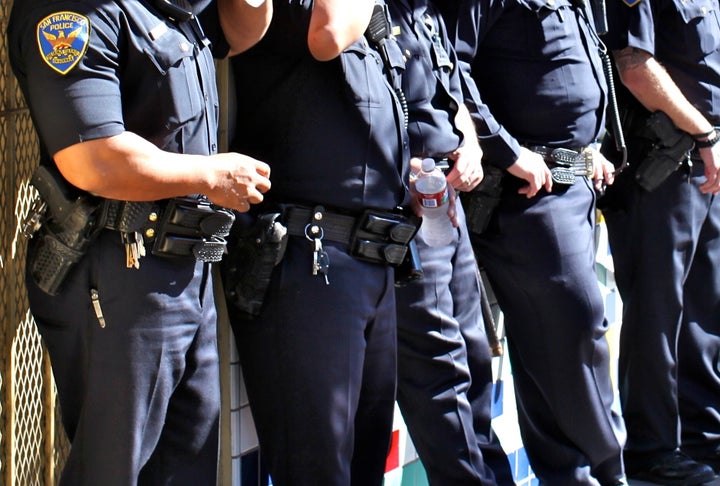
On Saturday August 13, 2016, a 23-year-old named Sylville Smith was gunned down by an unnamed officer from the Milwaukee Police Department. Mr. Smith was a young black man, the father of a two year old son and was described as “a nice, good person. He was really respected.”
Sylville Smith was a young black man that lived in the “most segregated city in America.” He was a brother that was raised in Milwaukee, where more black men are incarcerated than in any other city in the nation. He was a son that was raised in a city where his father had been incarcerated and where he himself had already been targeted and jailed. He was a friend that was raised in a city deeply enmeshed in the struggle between black community members and the police officers that are killing them.
Mourners from the community protested in the streets for two days. These protests quickly escalated. Riots broke out, cars were burned, property was damaged and the National Guard was placed on standby. The nation began fighting once again over whether or not a young black man deserved to die at the hands of the police. And the family and friends of Sylville Smith began their struggle to find justice. Justice in a city, in a country, where and average of only 4 out of 1,000 cases of deadly force make it to court each year. Justice in a country where only one of these cases on average finds conviction.
Black Milwaukee had already suffered though the police killing of Dontre Hamilton, a black man living with a disability. And they had already taken to the streets when Hamilton’s killer was allowed to walk free. Black Milwaukee was well aware of the reported “group of 12 plaintiffs [who] filed civil cases against the city of Milwaukee and the Milwaukee Police Department for a series of approximately 70 illegal strip searches that police officers carried out between 2007 and 2012.” All of the victims of these illegal searches were black. Some of them were subject to inspections so humiliating that at least one victim was forced to publicly defecate in a box, and so violent that additional victims were left with anal bleeding.
Black Milwaukee was already very aware that their police force was corrupt, violent and both willing and able to take the lives of the people of Milwaukee without facing any consequences for their actions. Sylville Smith, the brother of Sherelle Smith and son of Mildred Haynes and Patrick Smith, was no less aware of what the police were capable of when he was stopped by two officers around 3:30 p.m. on Saturday August 13, 2016.
If law enforcement wasn’t encouraged to target black men by their own chief and his Broken Windows policies, Sylville Smith might still be alive today. If the police were prevented from racially profiling and harassing black communities, the unnamed officer might not ever have had the opportunity to kill the son of Mildred Haynes.
This is not the case in Wisconsin, though. Police officers in Milwaukee, Wisconsin are encouraged to target innocent black men. According to a statement made by Police Chief Edward A. Flynn, this is an intentional tactic used to maintain law and order.
He explained:
Yes, of course we are going to stop lots of innocent people. The point is, do folks understand what their role is as a cooperative citizen in having a safe environment. That level of inconvenience, if it’s coupled with respectful treatment, is something communities will accept to be safe. If the price of me walking down my neighborhood in safety is once a month (a police officer stops me), people are going to say, “That’s OK with me, it’s about time we saw the cops here.”
Except this is not the case in the Black Milwaukee, where giving the authority to police to harass innocent community members equates to more arrests, more incarceration, more brutality and more death. As former district representative Tamara Grigsby described:
Is racial profiling real? It’s like water to a fish in my world. There is a feeling, there is an understanding, an unsaid knowledge that this is part of the experience of being a person of color in Wisconsin. It feels like a standard practice in this state.
The only reason that has been given for the traffic stop is that the officers believed the occupants of the vehicle were engaged in “suspicious activity.” The “suspicious activity” has yet to be clarified, but it is very likely that Sylville Smith was profiled and stopped for doing little more than driving while black. Smith, by all reasonable accounts, was targeted by the unnamed officer that gunned him down.
The bodycam footage of the incident is still being withheld by authorities. As a result, much of what happened between the time Sylville Smith was stopped and the time that he was shot to death has yet to be made public. It is still unknown as to whether or not the officer that shot and killed Sylville Smith knew he was armed at the time that he fled. It is suspected that Mr. Smith knew the officer that killed him from high school. It is known that Sylville Smith, after being targeted by police for harassment without any accusation of illegal behavior, fled the scene. And he fled the scene without firing one shot at the police.
Still, police chased Sylville Smith down on foot.
And he ran. He arguably ran for his life. He ran from law enforcement officers that were from a precinct that was guilty of routinely abusing and humiliating black men at traffic stops. He ran from police officers from a law enforcement system that incarcerated more black men than any other city in the United States. He ran from the colleagues of a man that had helped to conceal the illegal and violent strip searches that were being forced on black men and killed Dontre Hamilton for no reason whatsoever. He ran from armed men that could kill him and get away with it.
There has been no valid reason given as to why the officer that killed Sylville Smith approached his vehicle. But once he had, it is reasonable to assume that Smith knew that his life was in danger. Mr. Smith had allegedly been stopped in his vehicle while in possession of a stolen firearm - in a country where it is legal to shoot and kill a black man solely for nothing more than exercising his second amendment right to carry a weapon. To be caught by police in possession of a stolen firearm is practically a death sentence. This authority to kill is so well enforced, in fact, that a weapon need not even be present for an officer to receive the green light to kill. According to Graham vs. Connor (1989) it must only be reasonable for the officer to believe that a weapon is present. And as the Supreme Court of the United States recently verified, “the law does not require officers in a tense and dangerous situation to wait until the moment a suspect uses a deadly weapon to act to stop the suspect.”
Sylville Smith was carrying a firearm when he was stopped by an unnamed Milwaukee Police Officer under “suspicious” circumstances. He was shot twice by the unnamed officer from the Milwaukee Police Department and died on the afternoon of August 13, 2016.
The officer that gunned down Sylville Smith will almost certainly be cleared of all charges. The community will continue to mourn and struggle to find justice. Until the legal loopholes like the “objective reasonableness” standard are closed, law enforcement officers will continue to be able to kill people while in uniform without being held accountable. Until federal protections are put into place, these killings will likely continue to fall along lines of race, class and ability. Communities will continue to protest and our brothers, sisters, friends family, mentors and elders will continue to be gunned down in the name of the law. There will continue to be no justice. There will continue to be no peace.
